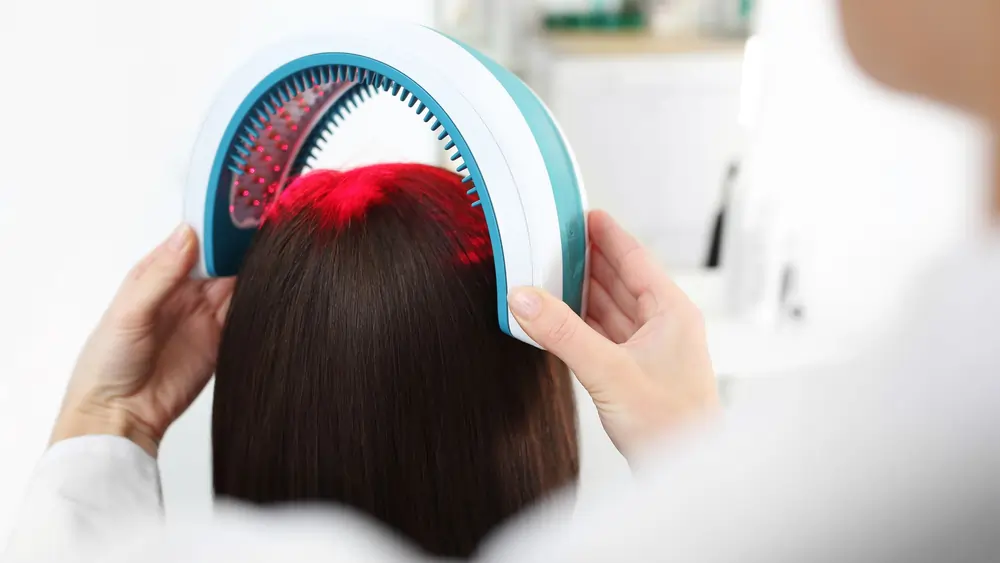Rosie Williams is a young social media influencer and television star from England. In 2022, she came out about a procedure that she had in 2020 to resolve a problem that many women have, but do not talk about.
Rosie revealed that she had had a hair transplant. In the YouTube video, she shared her feelings, explaining how she felt alone and was the only woman in the world suffering from hair loss.
Rosie’s hair loss was caused by stress. Unlike most women, she was losing hair in the same area as men, at the hairline. After doing research online, she consulted with KSL Clinic, a hair transplant facility based in Manchester. They analysed her hair and discussed alternative treatments such as shampoos and medication, as well as a female hair transplant. After careful consideration, Rosie decided that the long-term solution was the right one for her.

The Day of Rosie Williams Hair Transplant
Rosie explains the day of the transplant, expressing how worried she was about something going wrong. Her hair was shaved at the back of her head to take the donor hair from and transplant it to the hairline. Having received a local anaesthetic, she felt no pain during the surgery.
Contrary to popular belief, women experience hair thinning and hair loss just as frequently as men. Men and women both experience diffuse thinning, while women more typically have widespread thinning, in which the entire head of hair thins down over time. Usually, the top of the head is where men lose hair initially.
Recovering From the Procedure
Rosie shares with us that the day after the surgery, she did not feel well, being dizzy, confused and in some pain. She also talks about the swelling, which came about very quickly. However, she said that the pain and swelling went away very quickly.
She had received a care package from the clinic, which contained painkillers, antibiotics, cream, salt spray and other items to help in her recovery. Following the Rosie Williams hair transplant, she followed all the instructions that her surgeon had given her, which certainly helped towards her quick recovery and the overall success of the hair transplant.
PRP Treatment
Rosie had PRP treatment after her surgery, to assist the hair follicles in growing back. PRP is a treatment whereby a person’s blood is drawn and the plasma is extracted. This is then injected into the area of the scalp where the hair transplant was done.
PRP treatment helps the newly transplanted hair follicles to grow in their new positions. It also assists with producing strong, thicker hair. This treatment will be conducted every 4-6 weeks and three treatments are recommended. The treatment is not recommended for people who are on blood thinners, smoke or use alcohol.
Hair Growth Recovery
As someone who is often in the public eye, Rosie had become very self-conscious and felt a lot of stress as a result of her hair loss. After 2 years, she has undergone a full recovery and her hair is back to a natural state.
Although she does not give us a full timeline of the regrowth period, she says that she was experiencing full hair growth at 18 months. Rosie tells us that she hasn’t had to use extensions on her hair and that the most severe hair treatment she has had is to touch up her grey roots.
In the early stages, Rosie would tie her hair up so that the shaved area of her head would not be visible. She had a FUE transplant.
FUE Hair Transplant
Individual hair follicles are removed from your skin during a follicular unit extraction (FUE) hair transplant and then implanted in different locations on your body. The new area’s hair will appear thicker as a result.
It is a minimally invasive procedure that does not require stitches. This means that there are no visible scars after the procedure, which is important for someone who spends time on the red carpet!
This hair transplant technique allows more grafts to be done, so you achieve a thicker head of hair. As there is minimal damage to the nerves, there is less selling than you get using other techniques.
The most crucial period for your hair transplant results is the first week following your hair transplant. The day following surgery, your surgeon will inspect your scalp to make sure there are no infections and that everything seems normal. You will be shown how to wash your own hair at the clinic. The worst of any discomfort you may encounter may occur within the first week.
The recipient area will have significantly healed by Day 10 and the scabs will have started to fall off. Your hair will be experiencing “shock loss” and the transplanted hair will be falling out. Each hair follicle is unique, causing loss and regrowth at different times. This may create a “patchy” look.
By Week 3, scabbing has now gone and the majority of the traumatised transplanted hair has now fallen out while the hair follicles have rested. You are now in the telogen resting phase. During this phase, the hair follicle is completely at rest and the club hair is forming. Club hairs are the final product of hair growth and have a keratin (protein) bulb at the root tip of each strand.
Hair will start growing around about the 6 month stage. Most people report full recovery between 12 – 18 months.
If you are suffering from hair loss, we suggest that you watch Rosie’s story. Unfortunately, women’s hair loss seems to be a taboo subject, and her sharing her story will help to answer a lot of your questions and help you understand what to expect if you decide a hair transplant is the right thing for you.
What are your thoughts on the Rosie Williams hair transplant?




